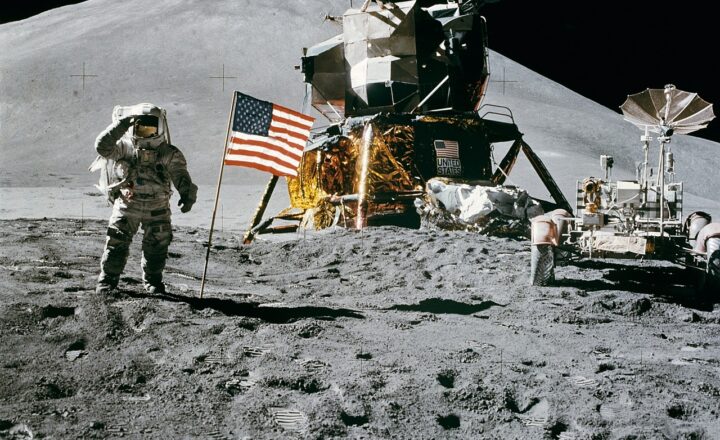The Weirdest Devices of the Space Race That Tried to Get Humans to the Moon
November 15, 2024

The Space Race represented one of the most extraordinary eras in human history, showcasing the incredible lengths to which nations would go to assert their technological prowess and explore the universe beyond our earthly boundaries. As we reflect on this fevered competition that lasted from the late 1950s through the mid-1970s, we uncover an array of bizarre and innovative devices that were either proposed or developed to achieve the ultimate goal: landing humans on the Moon.
1. The Lunex Project: A Playful Yet Ambitious Dream
In the early 1960s, the United States initiated a series of projects aimed at reaching new heights in space exploration, one of which was the Lunex Project. This was designed as a complex system that would land humans on the Moon using a cheetah-shaped space vehicle.
**Characteristics of the Lunex Project:**
– **Cheetah Design:** Its design was inspired by the need for speed and agility like that of a cheetah, to maneuver easily through the Moon’s gravitational pull.
– **Jet-Powered Landing:** The vehicle was equipped with jet engines to facilitate a safe landing on the lunar surface, a feature quite unorthodox compared to traditional rocket technology.
– **Reusability Concept:** The plan was to make the vehicle reusable, which would theoretically allow for multiple journeys to and from the Moon without needing to construct new spacecraft for each mission.
Though never launched, Lunex served as an inspiration for future designs and demonstrated the avant-garde thinking of engineers during the Space Race.
2. The Project HARP: The Moon Cannon
The High Altitude Research Project (HARP) was designed during the Cold War by a mix of Canadian and American scientists as a weapon against potential threats. However, it birthed the idea of launching projectiles into space using large cannons instead of rockets.
**Noteworthy Features of Project HARP:**
– **Launch Mechanism:** The concept involved using a massive cannon that could theoretically shoot capsules beyond Earth’s atmosphere, aiming directly for lunar orbit.
– **Projectile Design:** The projectiles were designed to carry scientific instruments or even humans in capsule form. Some designs involved adding parachutes to slow descent back to Earth after reaching their destination.
Despite its unusual method, the idea fostered discussions about alternative methods of space travel and illustrated the era’s inventive and sometimes wild technological aspirations.
3. The Moon Base Alpha: A Floating Colony Concept
While the idea of a permanent Moon base was ultimately not realized in the 1960s, one audacious proposal called for an enclosed floating habitat, allowing astronauts to live and work on the Moon’s surface.
**Features of Moon Base Alpha:**
– **Artificial Atmosphere:** Equipped to create a livable atmosphere, the design aimed to shelter astronauts from harmful cosmic radiation.
– **Modular Design:** The base was to be constructed in modules, making it adaptable and expandable. This foresight resonates with modern space habitat designs being proposed today.
The concept was ambitious and reflected an era of limitless imagination, setting stages for future endeavors in lunar habitation.
4. The Mars Direct Mission: A Lunar Leap Opportunity
Initially focused on Mars, the Mars Direct Mission also also conceived lunar applications that were creatively outlandish. This plan aimed to sending a spacecraft to make the journey to Mars simpler by executing a flyby of the Moon beforehand.
**Innovative Aspects of Mars Direct:**
– **Using Lunar Resources:** As part of the approach, astronauts would utilize lunar resources to refuel the spacecraft, demonstrating a practical use of space mining and resource management approaches today.
– **Overlapping Missions:** The dual-focus plan to land, gather resources, and then refuel Moon-bound vessels for a journey to Mars underscored elevated problematic solutions in long-distance space travel.
While it never took off literally or figuratively, the mission’s credibility illustrated a growing audacity to contemplate interplanetary exploration, reveling in the unorthodox practices and ideas of the time.
5. The Orion Project: Nuclear-Powered Rockets
As part of the space exploration programs in the late 1950s and early 1960s, the Orion Project proposed using nuclear pulse propulsion to send a spacecraft to the Moon and beyond.
**Nuclear Propulsion Features:**
– **Nuclear Explosions as Thrust:** The vehicle’s mechanism involved detonating nuclear explosives behind the craft to propel it forward—a bizarre idea that raised significant safety and feasibility questions.
– **Multipurpose Use:** Proponents outlined the ability for these rockets to not only reach the Moon but delve deeper into the solar system, pioneering human exploration of nearby planets.
Though the Orion Project was never realized due to safety concerns and shifts in policy, it remains a tantalizing glimpse of the future that might have been, showcasing the exceptional thinking and ambition of scientists from an era of frantic competition and innovation.
Conclusion: The Embrace of Innovation
The absolutely bizarre devices and concepts that arose during the Space Race may never have made it to lunar soil, but they provided insight into the daring creativity of a generation intent on conquering the stars. Each failed attempt, be it Lunex, HARP, or the Orion Project, paved the way for future advancements in space exploration, pushing the boundaries of what is possible.
As we continue to explore the cosmos, we can reflect on these strange and innovative devices as crucial stepping stones marking the evolution of our quest to understand the mysteries beyond our planet. The aspirations and visions that once defined an era continue to inspire current and future generations in their pursuit of knowledge and discovery.







